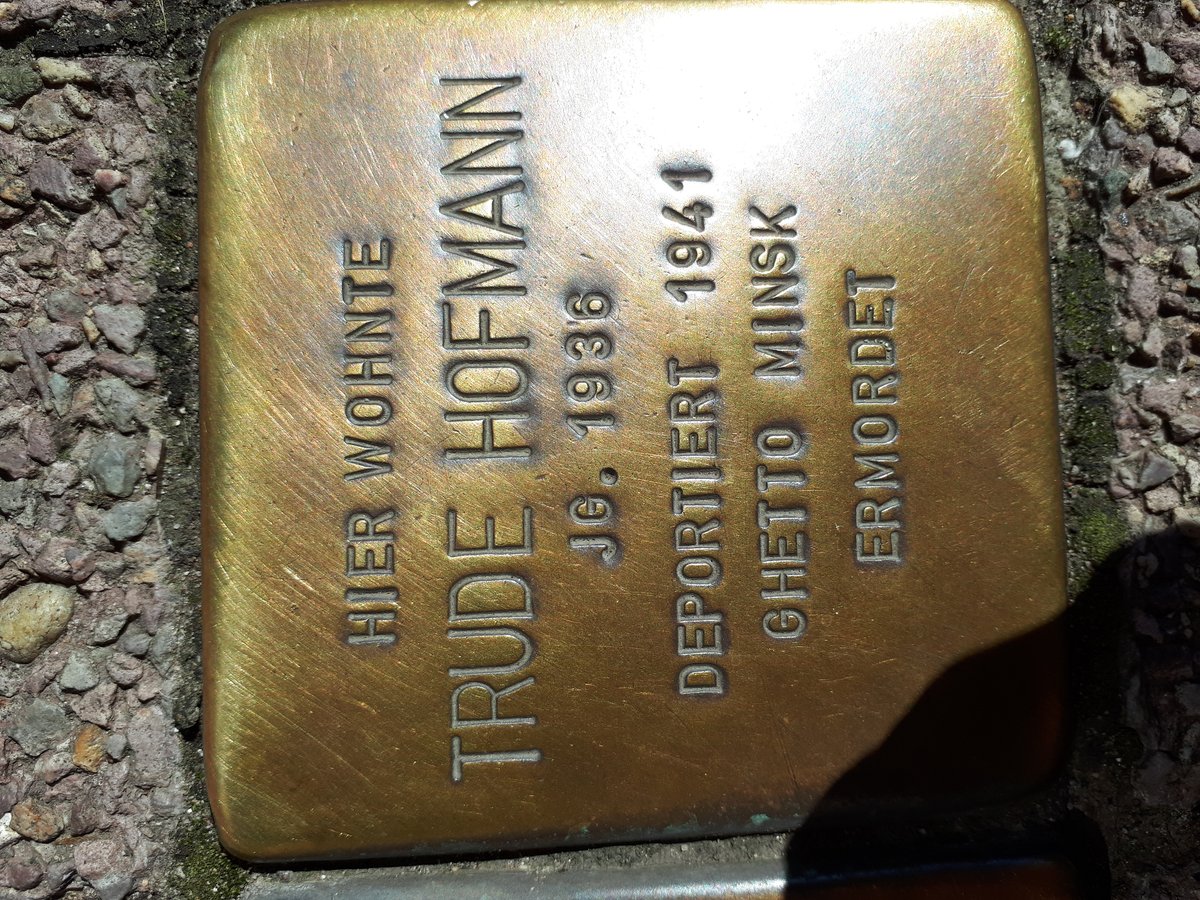
Stolperstein Trude Hofmann in Karlsruhe: A Visitor’s Guide
Date: 14/06/2025
Introduction
The Stolperstein commemorating Trude Hofmann in Karlsruhe is a poignant reminder of the individual lives tragically lost during the Holocaust. This guide provides a comprehensive overview of the Stolperstein, its historical context, cultural significance, and practical information for visitors. It also explores the broader Stolpersteine project and its impact on remembrance and education.
The Stolpersteine Project: A Decentralized Memorial
The Stolpersteine project, initiated by artist Gunter Demnig in 1992, is the world’s largest decentralized Holocaust memorial (Wikipedia). These “stumbling stones,” small brass plaques embedded in pavements, commemorate victims of Nazi persecution at their last freely chosen residences. Unlike centralized monuments, Stolpersteine bring remembrance into everyday life, prompting reflection on individual fates within the vast tragedy of the Holocaust (Prague Views; Germany.info). Each Stolperstein is inscribed with the victim’s name, date of birth, and fate, offering a personalized tribute. As of 2024, over 100,000 Stolpersteine have been installed across Europe (stolpersteine.eu).
Trude Hofmann’s Story
Trude Hofmann was a young Jewish girl who lived with her family at Markgrafenstraße 34 in Karlsruhe (Stadtwiki Karlsruhe). The Hofmann family, like countless others, was subjected to the horrors of Nazi persecution. In 1940, they were deported during the Wagner-Bürckel Aktion, a forced expulsion of Jews from southwestern Germany (Stadtwiki Karlsruhe). Trude’s Stolperstein, located at her former residence, serves as a testament to her life and the tragic fate she shared with so many.
Visiting the Stolperstein
The Stolperstein for Trude Hofmann is located at Markgrafenstraße 34, 76133 Karlsruhe, Germany, near Lidellplatz (Stadtwiki Karlsruhe). The site is accessible 24/7 and free of charge. No tickets are required. Visitors are encouraged to approach the Stolperstein with respect, pausing to read the inscription and reflect on Trude’s story.
Guided Tours and Further Exploration
While the Stolperstein can be visited independently, guided tours focusing on Jewish history and the Stolpersteine in Karlsruhe are available through local organizations and the Karlsruhe City Museum (Karlsruhe Tourism). These tours provide valuable context and deeper insights into the lives and experiences of the victims.
Nearby attractions related to Karlsruhe’s Jewish heritage include the Platz der vergessenen Kinder (Square of the Forgotten Children), a memorial dedicated to Jewish children who perished during the Holocaust, and the Karlsruhe Synagogue (Platz der vergessenen Kinder Official Page; Karlsruhe City Museum).
Digital Resources
Several digital resources enhance the experience of visiting the Stolpersteine. The Stolpersteine Guide app offers interactive maps, biographies, and guided tours (Stolpersteine Guide app). The Stolpersteine database provides detailed information on individual victims and their stories (Stolpersteine Database).
Practical Tips for Visitors
- Transportation: Karlsruhe has an efficient public transportation system that makes reaching the Stolperstein easy.
- Accessibility: The Stolperstein is located on a public sidewalk and is generally accessible.
- Respect: Approach the Stolperstein with respect and avoid stepping directly on it.
- Cleaning: Visitors often clean the Stolpersteine with a soft cloth as a gesture of remembrance.
Conclusion
The Stolperstein for Trude Hofmann in Karlsruhe offers a powerful and personal way to connect with the history of the Holocaust. By visiting this memorial and engaging with the resources available, we can honor Trude’s memory and contribute to ensuring that the victims of Nazi persecution are never forgotten.
























































































































































































